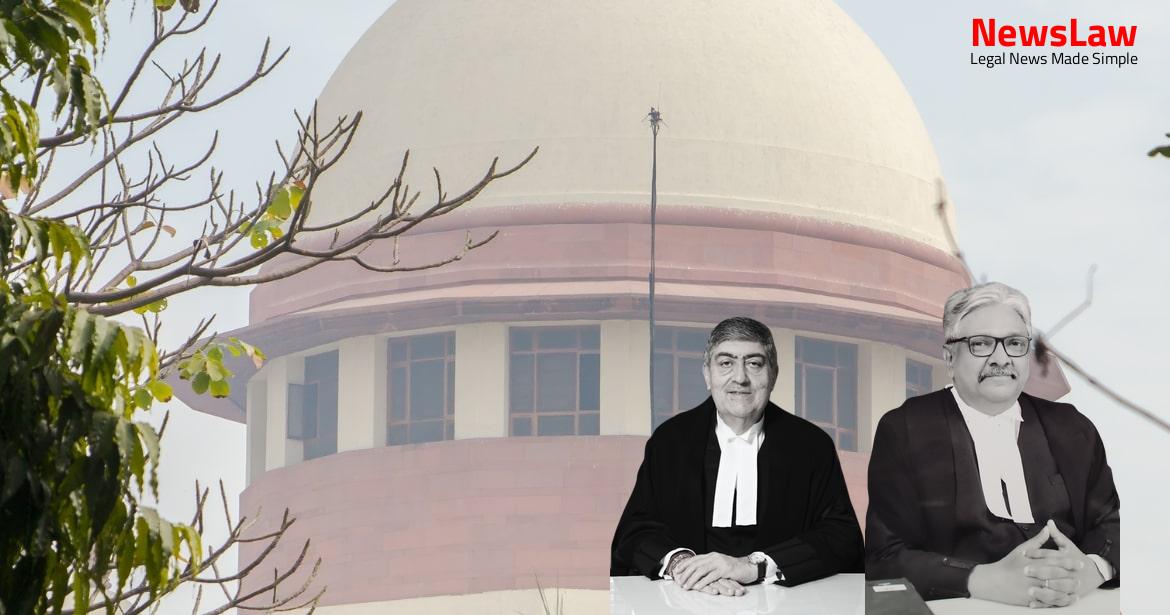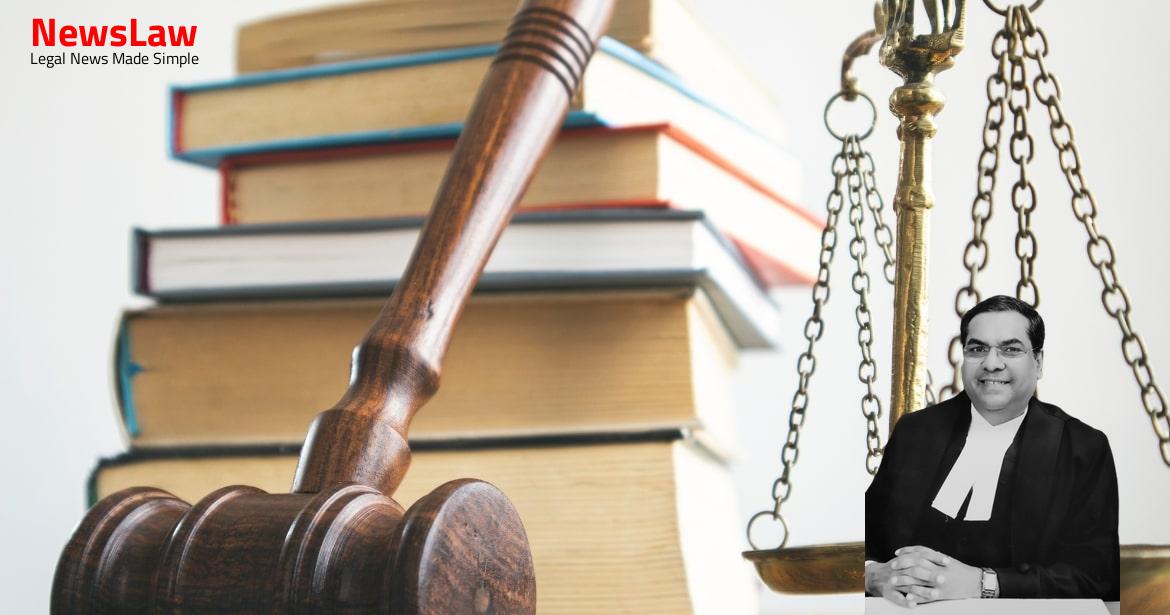The case of Laxman vs. Nivrutti marks a pivotal moment in land dispute resolution, with the Supreme Court of India delivering a monumental judgment. The legal heirs of Laxman have been embroiled in a complex battle against the legal heirs of Nivrutti, challenging property rights and tenancy issues. Join us as we delve into the intricacies of this case that has spanned for over 16 years, shaping the landscape of property law in India.
Facts
- Laxman obtained a Government job as a peon before the Kabuliyatnama was executed.
- The land in question was owned by Raghunath Hari Phadake.
- The suit was dismissed on 4.2.2009.
- The Deputy Collector initiated proceedings under Section 32G to determine the price of the land to be paid by the tenants.
- Legal heirs of Nivrutti were involved in the matter of the land transaction.
- A Special Civil Suit was filed by the legal heirs of Laxman as plaintiffs against the legal heirs of Nivrutti.
- Laxman was an attesting witness to the Kabuliyatnama for the land taken on lease by Govind, Sadashiv, and Nivrutti.
- An Agreement to Sell the land was executed by Shri Phadake.
- The grandsons of Laxman claimed rights in the property as they traced themselves back to the common ancestor, Bhimaji.
- Nivrutti was recognized as the individual owner of some parts of the land through Mutation entry No.23330.
- The wife and children of Laxman contested the mutation solely in the name of Nivrutti.
- The case set up in the plaint was that the parties constituted a Joint Hindu Family and the properties belonged to the same.
- In terms of Section 32 of the said Act, tenants who were tilling the land were deemed to have purchased the land from the owners.
Also Read: Supreme Court Judgment on Single Till Mechanism for HRAB Calculation: A Comprehensive Analysis
Arguments
- No sale deed executed in pursuance of Kabuliyatnama, courts refused to rely on it.
- Section 85 of the said Act bars Civil Courts from deciding on tenant-related matters.
- Certificate under Section 32M of the Act is conclusive proof of purchase, final per Section 85A.
- Appellants raised jurisdictional issue regarding Civil Court’s opinion on tenancy rights.
- Argument about Nivrutti acting as Manager/ Karta and validity of Agreement to Sell.
- Mamlatdar’s duties include determining if a tenant is a protected tenant.
- Argument to refer tenant status issue to Mamlatdar based on judgment.
- Opposing views from Nivrutti’s family representatives on the jurisdictional plea.
- Judicial pronouncements cited regarding partition of tenanted land without referring the issue to a Mamlatdar if material on record is sufficient to show tenancy or deemed purchase.
- Reference to Bombay High Court cases of Adam Mohmad Darwajkar & Ors. v. Appa Daud Darwajkar and Yeshwant Hari Patil v. Shripati Hari Patil & Ors. emphasizing the same principle.
- Citing Kerala High Court case of Ambu v. Vellachi & Ors. for similar stance on partition of tenanted land.
- Information provided on properties inherited by Laxman and legal heirs, sold for their benefit.
Analysis
- The certificate under Section 32M of the said Act was granted in favor of Govind, Sadashiv, and Nivrutti, but Laxman’s name was not included.
- The proceedings to challenge the certificate resulted in failure.
- The civil court did not stay the suit proceedings and remit the matter to the Mamlatdar for tenancy rights.
- The proceedings initiated by Laxman’s grandsons were considered a ‘side wind’ to challenge the certificate indirectly.
- The appeal and revision petition were dismissed.
- The proceedings have been ongoing since 2003 for the last 16 years.
- Concurrent findings of the trial court and the first appellate court were in agreement.
- The question of tenancy rights was not required to be remitted to the Mamlatdar as per the appellate court’s findings.
- Judgments cited by the appellants did not support their plea according to the appellate court.
- The final judgment upheld the findings regarding the Kabuliyatnama and the Agreement to Sell not being in Laxman’s name.
- Section 85A of the Act deals with suits involving issues required to be decided under the Act.
- If a suit in a Civil Court involves issues that fall under the jurisdiction of a competent authority under the Act, the Civil Court must stay the suit and refer those issues to the competent authority for determination.
- The competent authority, upon receiving the reference, must decide the issues in accordance with the provisions of the Act and communicate the decision back to the Civil Court.
- Once the decision is communicated, the Civil Court will dispose of the suit based on the decision.
- The explanation in the section clarifies that a Civil Court includes a Mamlatdar’s Court as well.
- Proof of the existence of a joint family does not presume that the property held by any member is joint.
- The burden of proof lies on the party asserting that a property is joint.
- Establishing the joint nature of a property requires concrete evidence and cannot be assumed.
- Proof of joint family does not automatically apply to individual properties within the family.
Also Read: Selection and Appointment of Judicial Officers in Himachal Pradesh
Case Title: CHANDRAKANT BABAN MOTKARI . Vs. GOTIRAM LAXMAN MOTKARI(D) BY LRS.
Case Number: C.A. No.-002390-002390 / 2011



